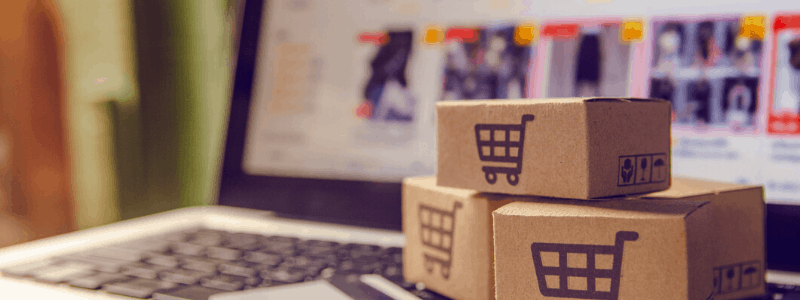
Peter Phillips
Sales Director, Ecommerce @ Skai

Peter Phillips
Sales Director, Ecommerce @ Skai
In our Skai 5 series, we discuss digital advertising tips, tricks & trends to keep you one step ahead of the consumers, the market trends and your competition. The evolution of retail has been blurringly fast over the last ten years. Brands that were pillars of the industry have come and gone and nimble startups have become household names. Today’s retail marketers cannot be tied back to legacy best practices, but rather must evolve themselves to remain relevant and successful in this new era.

A lot can change in a decade. Just 10 years ago, smartphones were still a bit of a novelty and most consumers would have said that tablets were made of paper and used for writing.
These days, most of us are never more than a few feet from our devices and constantly-evolving digital technology has introduced shoppers and businesses alike to a whole new world of retail opportunities.
In the past 10 years, customers have increasingly grown comfortable shopping online. A decade ago, most customers would never have dreamed of ordering groceries from an app—if they were even aware of what an app was. These days, consumers can have just about anything they desire delivered straight to their door without the hassle of driving, parking, and browsing the aisles of a brick-and-mortar retailer only to find the store is out of stock for the items that they desire.
In 2007, online sales accounted for just 5.1 percent of all retail sales, both on and offline. By 2020, ecommerce sales had grown tremendously, amounting to 19.6 percent of total sales. What’s more, in 2019, ecommerce sales earned retailers $598 billion and grew to $792 billion in 2020. As our devices and ecommerce platforms get even smarter and easier to use, consumers are going to up their online spending in the coming years.
To be quite blunt, early smartphones were not all that smart. The precursors to iPhones were pretty much just email checking devices with portable calendars. The first iPhones, launched in 2007, definitely improved on the browsing capabilities of the flip phone, but compared to the mobile devices most consumers have adopted just over a decade later, even the original iPhone was pretty rudimentary.
But as more and more websites become optimized for mobile, apps have become easier to use and more consumers are realizing how easy it is to shop from their phones. And as Apple Pay and Google Pay have grown in popularity, contactless smartphone payments are also on the rise and are predicted to surpass $1 trillion globally by the end of the year.
Smartphones have given consumers the power to order just about anything they could possibly want at the touch of a button. But that doesn’t necessarily mean the death of retail stores, it simply means that retailers have to change the ways in which they meet customer expectations.
Just a decade ago, it was incredibly common for customers to walk into a store having only a vague idea of what products they were interested in buying. For example, a first-time home buyer might walk into a garden store asking about which plants were most likely to thrive in a shady garden. These days, a new homeowner has probably spent hours researching plants for their gardens online, as well as searching for suggestions about which types of potting soil they might need and essential accessories for lawn care before even speaking to a salesperson.
According to Google,” 90% of consumers say they use multiple devices to complete everyday tasks, while 40% say they use their mobile device to conduct research prior to making a purchase (Google). But that does not mean they are not shopping in brick and mortar stores. Another study by Forbes Insights in conjunction with Synchrony Financial found that for more expensive items, 46% of customers prefer going to a physical location to actually make a purchase.
And new research shows that no search engine or website is more powerful in that critical research stage than Amazon. In fact, more than half of consumers (89%) are more likely to buy products on Amazon than other ecommerce sites. These stats are important for all retailers, even those who are primarily interested in traditional retail, because all customers are now beginning their buyers’ journeys armed with the knowledge they have acquired via Amazon and Google, among other online places.

So what should retailers do to make sure customers choose their store during that all-important research stage? The secret to turning browsers into buyers could very well begin with customer reviews.
Turns out, those five-star ratings on Google My Business or good experiences with a product reported via Amazon are good for way more than just an ego boost. Zendesk recently found that 88 percent of customers read online reviews before buying a product. For both ecommerce and brick and mortar retailers, encouraging reviews and monitoring places like Amazon, Google, and Yelp for negative reviews that can be cleared up with the help of customer service is critical for creating a good impression during those all-important initial searches.
And retailers can’t just sit back and hope the good reviews come pouring in—they must be proactive and find ways to encourage and gently nudge their best customers to provide reviews. This is now a critical retail marketer function and an appropriate investment in time, budget, and focus should be spent in this area.
Consider these stats if your marketing organization hasn’t prioritized driving positive reviews:
Owners of local businesses—where neighborhood word-of-mouth is just as critical as online reputation—may be asking what the rise of ecommerce has to do with them. Quite a lot actually. As all types of buyers increasingly use mobile to help find local goods and services, developing a good reputation, especially in customers’ map apps is critical.
According to Think With Google
“When shoppers search for a store name or category, they expect to see a map with directions, a phone number that they can easily click-to-call, or special offers that match their location and time of day. Adidas worked with their agency iProspect to evaluate how mobile clicks on their store locator links were driving in-store sales, and found that for a mobile investment of $1 million, the value brought by store locator clicks in mobile ads generated an extra $1.6 million in sales.”
Making sure physical retail locations are easily discoverable on Google Maps is even more critical for small, local businesses than it is for national chains. For example, a chocolate-loving customer might live in a neighborhood for years before discovering a wonderful local chocolatier just a few miles away because a search on Google Maps didn’t yield any nearby results. Keeping business pages up-to-date with maps, hours, and product information, along with monitoring reviews means making a business discoverable, even if that business is not aiming to get into the ecommerce game.
As new technology continues to simplify the discovery and purchase options for most consumers, many businesses struggle to keep up. The first step to building good reviews and making sure your business is discoverable online is simply searching for your business by name on both desktop and mobile. You may be surprised by what you find!
Skai Retail Media is the leading solution for marketers to create, manage, forecast, and optimize Amazon Sponsored Ads campaigns at scale. Without the right toolbox, your retail programs might not be able to reach their potential. Read more on how to use digital shopping ads to collapse the purchase path and sell wherever and whenever your customers wish to transact.
Contact us today or set up a quick and easy demo to see how Skai Retail Media might be able to help you.
Learn More About Skai Retail Media
You are currently viewing a placeholder content from Instagram. To access the actual content, click the button below. Please note that doing so will share data with third-party providers.
More InformationYou are currently viewing a placeholder content from Wistia. To access the actual content, click the button below. Please note that doing so will share data with third-party providers.
More InformationYou are currently viewing a placeholder content from X. To access the actual content, click the button below. Please note that doing so will share data with third-party providers.
More Information